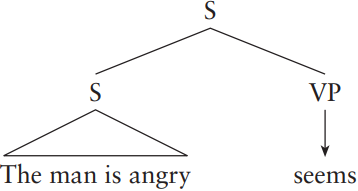
raising (n.)
 المؤلف:
David Crystal
المؤلف:
David Crystal
 المصدر:
A dictionary of linguistics and phonetics
المصدر:
A dictionary of linguistics and phonetics
 الجزء والصفحة:
401-18
الجزء والصفحة:
401-18
 2023-11-04
2023-11-04
 1382
1382
raising (n.)
A type of rule recognized in some models of transformational grammar: in its broadest sense, any rule that moves a constituent to a higher position. In a ‘raising-to-object’ (or object-raising rule, the linear constituents in a string consisting of a main clause + complement clause (e.g. he believes John to be honest) are bracketed so that the subject of the complement clause appears to have been raised to become the object of the higher clause (he believes it + John is honest becoming he believes John + to be honest). In a subject-raising rule, an underlying subject complement clause has the subject taken from it and ‘raised’ to be the subject of the main clause. For example, in relating such sentences as it seems that the man is angry to the man seems angry, one may begin with:

Subject-raising (in association with other transformational operations, omitted here) places the man as subject of seems, producing (the man) (seems) (to be angry). The FORMALIZATION of such rules is controversial, as is the extent of their application (they are both GOVERNED rules, applying to small classes of verb only). In GOVERNMENT-BINDING THEORY, classical TG subject-to-object raising constructions are analyzed in terms of EXCEPTIONAL CASE MARKING, and classical TG subject-raising constructions in terms of NP-MOVEMENT. In PHRASESTRUCTURE GRAMMAR and LEXICAL FUNCTIONAL GRAMMAR, both are regarded as types of CONTROL constructions. Sometimes raising constructions are referred to as CATENATIVE constructions. Other syntactic applications of the term ‘raising’ may also be encountered (e.g. ‘PREDICATE-raising’, ‘NEGATIVE raising’, ‘QUANTIFIER raising’).
In PHONETICS and PHONOLOGY, a vertical process affecting TONGUE height; opposed to lowering. For example, in the study of VOWEL HARMONY, a vowel might be said to raise (e.g. from mid to high) in the context of a following high vowel. In the course of language change, a vowel in an originally low position might be raised to a relatively high position.
 الاكثر قراءة في Syntax
الاكثر قراءة في Syntax
 اخر الاخبار
اخر الاخبار
اخبار العتبة العباسية المقدسة


